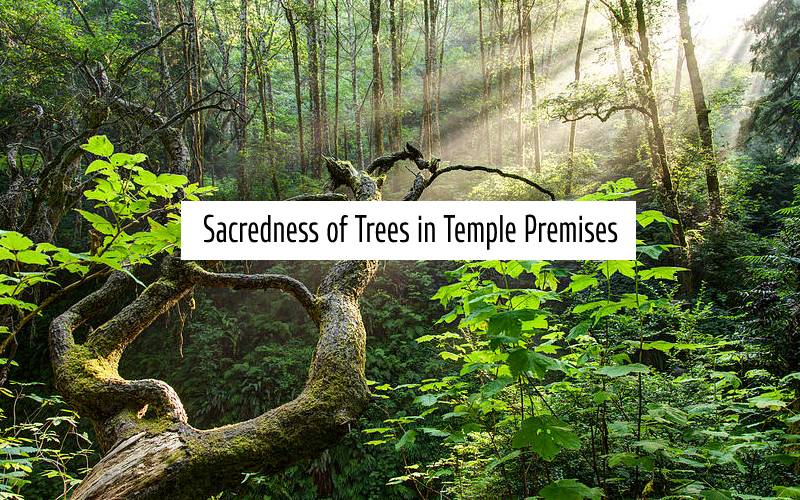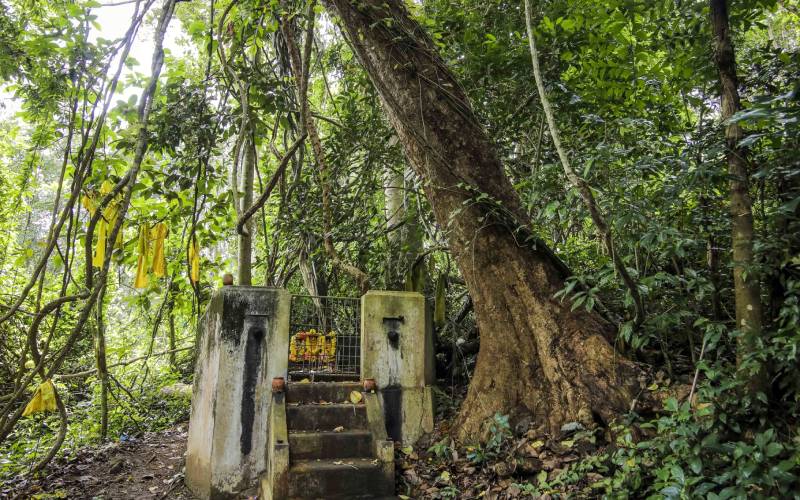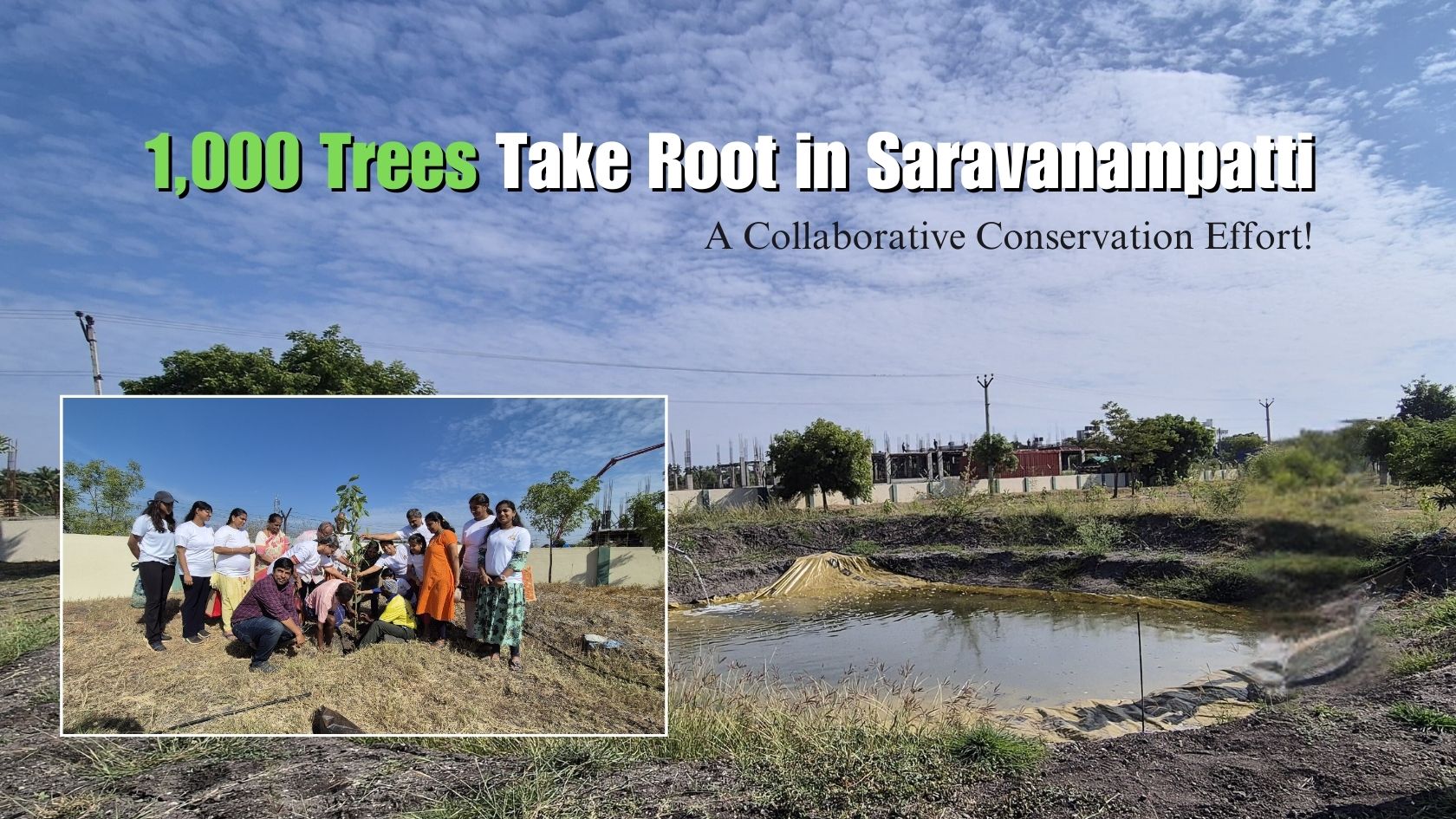
The ‘Thiruvilayadal Puranam’ talks about the creation of Madurai. Kula Shekara Pandiya had stumbled upon a huge thicket of Kadambha trees. He had cleared these trees and had constructed the village of Madurai with the temple of Meenakshi at its epicentre. The Aadi Street in Madurai contains some Kadambha trees and the Puttuthopu has few. In fact, the Kadambeeshwarar Temple is associated with this name. Sangam Literature contains a lot of references to trees. Amba is often referred to as Kadambha Vana Vaasini (One who dwells in Kadambha Vana). Similarly, every tree and temple in Tamil Nadu are connected with each other. The trees either form the sthala-vrkshaa-s or form a part of the sacred grove of the temple.
The sthala-vrksha (The tree of the temple) is indigenous to every historical Hindu temple. Temple trees are part of the Dravidian style temples in the south. These trees are holy and historical places derive their names from such trees. Hinduism and nature are inter-related. Trees are sacred for the Hindus and the devout take care of trees. In fact, the cutting of trees is considered to be inauspicious. Trees are considered to be conferrers of gifts and people pray in front of the trees for the purpose of getting their wishes fulfilled.
Tying threads, hanging cradles and bells to trees have been part of the lore for centuries. Trees are found to symbolize growth and prosperity. The villagers of India and Tamil Nadu in particular are aware that a particular tree or forest is associated with specific deities like, Kali, Maariamman, Yellai Pidaari etc. These goddesses are believed to have special powers and whenever the trees or forests associated with these deities are not looked after, the villagers are believed to get punished in the form of a poor harvest or famine.
The Shaivite lore is closely associated with a number of trees and forests. For example, the temple at Thirukkuvalai is associated with a forest called Kathakaaranyaa. Bilva (Aeglu Marmelos) is sacred for Lord Shiva and Tulasi (Ocimun Tenuiflorum) is important for Vishnu. Some common sthala-vrkshasa-s are Neem (Azadirachta Indica), Peepal (Ficus Religiosa), Marudhu (Terminalia Paniculata) and Kanikonna (Cassia Fistula). The selection of flowers is quite interesting. White, blue, and yellow are important for Lord Vishnu while red and shades of orange are sacred for Shiva.
The Aadhi Kaavyam, ‘Ramaayana,’ states that sthala-vrksha is a mixture of Yakshaya chaitya (The tree with the spirit within) and Vrksha chaitya (The protector tree). This indicates the sacred tree in each region. The great teacher, Dakshinaamoorthy, is found seated under a banyan tree and he faces the south. Shiva could be found seated on a deer throne surrounded by sages receiving instructions within the premises of sacred trees.

The sthala vrksha is usually located behind the sanctum and an elevated platform makes it unique. In some cases, it is found in the outer prakaaram of the temple. The sthala vrksha is a deity by itself and people apply turmeric, vermilion etc., before tying flowers to it. Some trees have cult statues placed around them. The wise have always viewed the planting of trees within the temple as a means to protecting the environment. A nice square platform is normally created around the tree and a circumambulatory passage is added to the same. Images of deities, and serpent stones, are placed here.
Trees live long and they are considered to be progenitors of longevity. However, they pass away overtime and another one is planted in the same place. This sequence is equated to the cycle of rebirth. Temple trees have been institutionalized long ago in Tamil Nadu which can be rightly called the 'Temple state of the world.'
Vedic texts talk about amulets that are made of specific plants. These are said to ward off evil spirits. A lot of temples and their histories are found in ‘Padma Purana’ and the ‘Matsya Purana’. The ‘Aganaanooru’ and ‘Puranaanooru’ (Sangam literature) mention a number of trees. The ‘Thevaaram’ has multiple mention about the vast types of temple trees. The Naayanmaar-s, Appar; Sundarar; Sambandhar; and Manickavaasagar, have added the names of temple trees in their compositions. The first ithihasa, ‘Ramaayana,’ has a detailed narration about the forest traversed by Lord Raamachandra along with Seetha and Lakshmana.
The wish-fulfilling tree is known as kalpa vrksha and they are preserved in temples. Many authors and scholars have written about the sthala-vrksha-s by listening to the sounds of the wind they produced. A few books by them throw much light on this aspect. Books and articles like, ‘One Tree is Equal to Ten Sons: Hindu Responses to the Problems of Ecology, Population, and Consumptions’ and ‘Visions of a New Earth: Religious Perspectives on Population, Consumption and Ecology,’ by Vasudha Narayana, ‘Hinduism and Nature’ by Nandhitha Krishna, ‘Flowering Trees’ by P. K. Valsala Kumari add value to every tree that had been planted.
The sthala vrksha-s or temple trees are considered to be a representation of the wider aspects of nature. This representation clearly communicates the fact that ancient Hindus had revered nature and continue to do so.
NEXT ARTICLE

A group of eager volunteers and nature enthusiasts, gathered amidst the lush greenery, ready to embark on a mission to enhance the beauty of our surro...